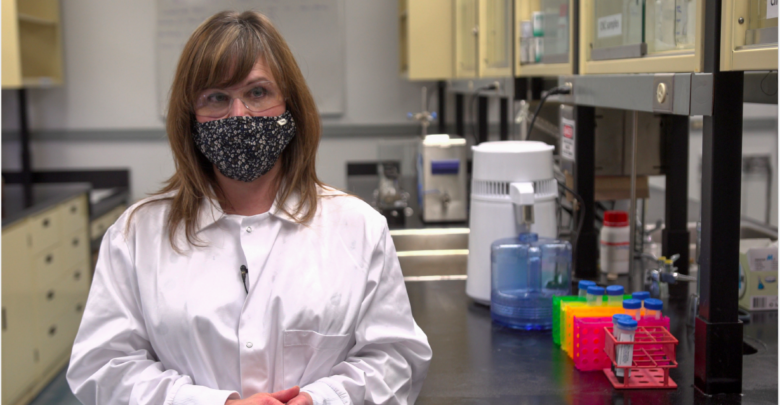 supplied
suppliedWith the increased importance of effective COVID-19 testing, a University of Alberta researcher has developed reagents crucial for identifying those with the virus.
Stacey Hume, an associate professor of medical genetics at the U of A, responded to the province’s call for help creating reagents that are involved in COVID-19 testing. The reagents are important for extracting the genetic information from the virus, allowing for their identification.
Prior to this, no one in Canada made this vital resource and all the supplies used were outsourced internationally. It was Hume’s expertise that helped bring played a key role in bringing production closer to home.
“Having had a lengthy amount of experience doing nucleic acid extractions for my job doing genetic analysis for the province, I decided we could probably make this reagent in-house and have it available locally in Alberta,” Hume explained.
“Although I usually work with human [genetic material] and this is viral, genetic material is genetic material, so I was quite interested in seeing if we could adapt what we do for human nucleic acid extractions to viral.”
Hume described how there are two types of tests for the SARS-COV-2 virus: antigen tests and molecular or polymerase chain reaction (PCR) tests. Antigen tests involve looking certain proteins on the virus, but tend to be less sensitive and require a lot of virus to be in the person.
The second test is the PCR test which extracts the genetic material from inside the virus. Reagents are used to break open the virus and expose the nucleic acids inside so that further testing can be performed on them. Compared to the antigen test, this method is more sensitive and is where Hume’s reagents will be focused.
“[I was] quite motivated to get that [test] to be more sensitive and therefore be able to detect people earlier than what is commercially available on the market,” Hume said.
Part of this project involved the development of magnetic beads to bind to and trap the genetic material so it can be easily washed. For this, she reached out to two groups: the university faculty of chemical engineering and Applied Quantum Material Inc. (AQM), a spin-off company from the department of chemistry.
While both groups were able to create effective beads, Hume decided to work with AQM since their beads were more effective and also because they had “the capacity to scale up to meet demands” not feasible in a university research lab.
Now, the reagent Hume created is being used in the COVID-19 testing of Alberta Precision Laboratories (APL), an Alberta Health Services (AHS) group that provides diagnostic lab services. Other provinces are also seeking out these reagents to see whether they work.
“So far it is looking that our [reagent] is looking more sensitive than what is already commercially available on the market,” Hume said.
Hume explained that nucleic acid extractions are nothing new and have been used by the government for numerous other reasons such as surveillance for Salmonella and Mad Cow Disease.
However, she feels the pandemic has really really shed light on the technique, pointing out that the AQM hired local science students to work on this project, providing jobs.
“Now when the oil and gas are struggling a bit, it is really nice to see another sector that is coming along in Alberta and a place for U of A graduates to go,” Hume said. “You can go into science and hear that there are jobs for people with science degrees.”




